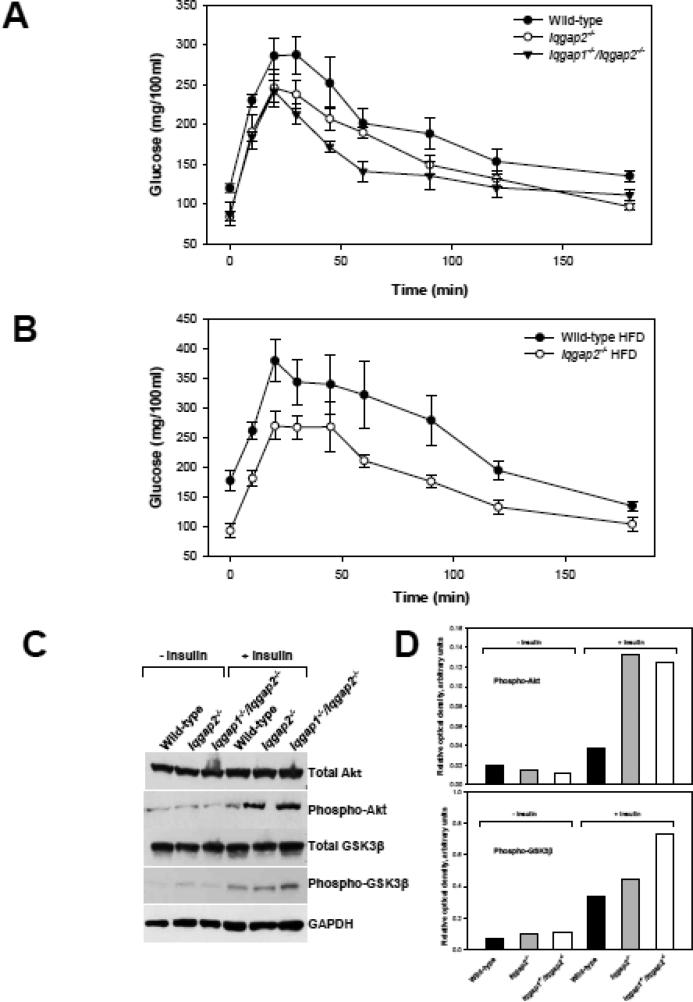Figure 6.
Enhanced insulin sensitivity of IQGAP2-deficient liver. (A) Glucose tolerance test (GTT) using 6-month-old male wild-type, Iqgap2-/- and Iqgap1-/-/Iqgap2-/- mice fed regular diet and fasted overnight. Glucose (2 g/kg) was administered as a single intraperitoneal injection and blood samples were collected from a tail vein at the specified times. Data are presented as mean SEM, n = 5 in each group. The graph is representative of two independent experiments using different mice. (B) GTT using 6-month-old male wild-type and Iqgap2-/- mice fed high fat diet (HFD) for 8 weeks and fasted overnight prior test. Data presented as mean SEM, n = 5 in each group. The graph is representative of three independent experiments using different mice. (C) Immunoblot analysis of hepatic total levels and the phosphorylated forms of Akt (Ser473) and GSK3β (Ser9) in response to insulin stimulation in 6-month-old male wild-type, Iqgap2-/- and Iqgap1-/-/Iqgap2-/- mice. The blot is representative of four independent studies. (D) Densitometric quantification of hepatic levels of phospho-Akt and phospho- GSK3β in response to insulin stimulation normalized to GAPDH levels.

